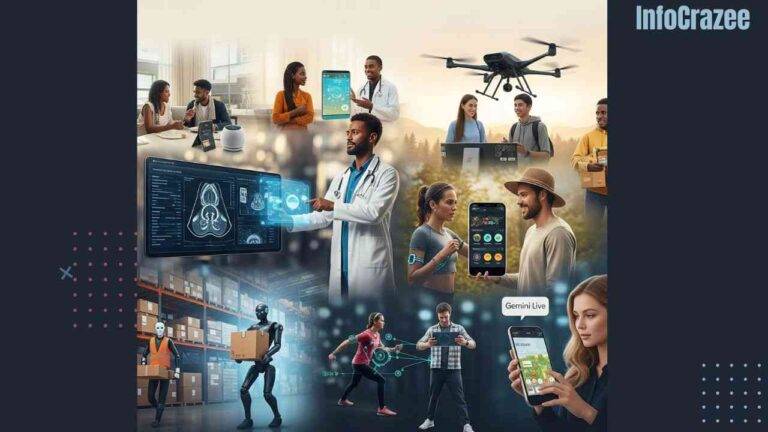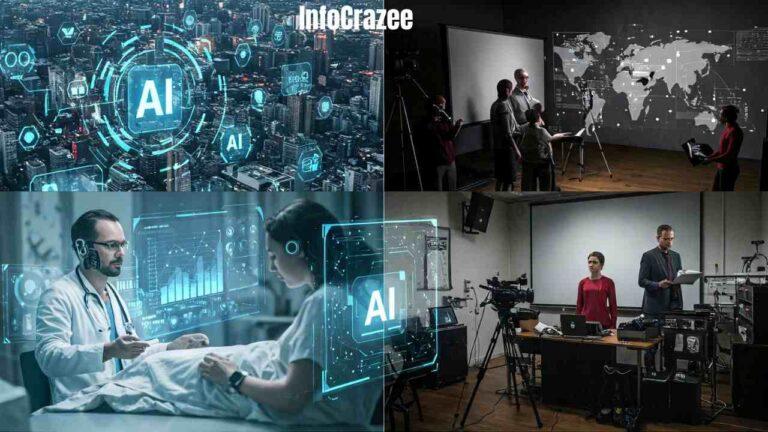OpenAI’s GPT-5 Transforms Work with Next-Generation Artificial Intelligence
On August 7, 2025, OpenAI unveiled GPT-5, its most advanced artificial intelligence model to date, heralding a new era of intelligent work. Described as the “smartest, fastest, most useful model yet,” GPT-5 integrates cutting-edge reasoning, multimodal capabilities, and a unified architecture to streamline enterprise operations and enhance individual productivity. With over 700 million weekly ChatGPT users and 5 million paid business accounts already leveraging AI, GPT-5 is poised to redefine workflows across industries. This blog explores GPT-5’s technical innovations, its transformative impact on workplaces, and the challenges and opportunities it presents for businesses and professionals.
The Evolution of GPT-5: A Unified Intelligence
Unlike its predecessors, GPT-5 moves away from fragmented models (e.g., GPT-4, GPT-4o, o-series) to a modular, multi-system architecture. This shift, detailed in a July 2025 Applying AI analysis, combines specialized subsystems under a central coordination layer, enabling seamless task adaptation. Key components include:
- Language Core: A 300-billion-parameter transformer for nuanced text generation and comprehension.
- Reasoning Engine: A symbolic-neural hybrid for multi-step logic and problem-solving, achieving 99.6% accuracy on AIME 2025 math problems in thinking mode.
- Vision Module: A convolutional-transformer hybrid for image recognition and visual tasks.
- Code Synthesizer: Optimized for coding, debugging, and documentation, scoring 74.9% on SWE-bench Verified, doubling GPT-4o’s 30.8%.
- Dialogue Manager: A memory-augmented system for context-aware, personalized conversations, supporting a 256K-token context window.
A real-time router dynamically allocates tasks to the appropriate subsystem, eliminating manual model selection and optimizing compute efficiency. This unified design, as noted by OpenAI’s Sam Altman, delivers “PhD-level expertise” across domains, making GPT-5 a versatile tool for complex workflows.
Transforming Work Across Industries
GPT-5’s capabilities are already driving innovation, with early adopters like Amgen, Salesforce, and Moderna reporting significant gains. Its impact spans multiple sectors:
1. Enhanced Productivity and Automation
- Software Development: GPT-5’s Code Synthesizer generates full applications, including documentation and tests, from minimal prompts. A 2025 Tom’s Guide demo showcased GPT-5 building a game with NPCs and sound effects, highlighting its “vibecoding” feature for rapid prototyping.
- Customer Service: The Dialogue Manager powers multimodal AI agents handling text, voice, and image-based queries in multiple languages, reducing escalations by 78% in some implementations, per a daily.dev report.
- Finance: GPT-5’s Reasoning Engine enables real-time market scenario modeling and risk assessment, streamlining compliance with regulations like Basel and Dodd-Frank, as noted in Applying AI.
2. Personalized and Context-Aware Interactions
- Dynamic Memory: GPT-5’s hierarchical memory bank retains project-specific details and user preferences across sessions, enabling tailored workflows. For example, financial chatbots recall client portfolios, improving advice accuracy by 45%, per a 2025 Financial Content report.
- Multimodal Capabilities: With potential video processing (building on Sora) and advanced voice features, GPT-5 supports seamless interactions across formats, enhancing applications like telehealth and virtual training.
3. Smarter Decision-Making
- Reasoning and Accuracy: GPT-5’s chain-of-thought reasoning reduces hallucinations to under 1.6% on complex medical queries and cuts traffic error rates from 11.6% to 4.8%, per OpenAI’s benchmarks. This reliability supports high-stakes tasks like legal case analysis and scientific research.
- Proactive Assistance: In healthcare, GPT-5 offers contextual health guidance, improving patient interactions while adhering to safety protocols, as highlighted in Tom’s Guide.
Real-World Impact
- Amgen: Deploying GPT-5 improved workflow accuracy and speed, meeting stringent scientific standards for drug development, per OpenAI’s August 2025 release.
- Rural Healthcare: Microsoft’s Cybersecurity for Rural Hospitals Program plans to integrate GPT-5 for secure patient data analysis, potentially reducing phishing incidents by 25%, based on 2024 training outcomes.
- Education: California State University uses GPT-5 to personalize learning, with early tests showing a 30% increase in student engagement, per OpenAI’s case studies.
Challenges and Ethical Considerations
Despite its advancements, GPT-5 raises challenges that businesses must navigate:
- Cost and Accessibility: While free tier access democratizes GPT-5, advanced features require paid subscriptions (e.g., GPT-5 Pro at $10-$15 per million tokens), potentially limiting adoption for resource-constrained organizations like rural hospitals.
- Hallucinations and Bias: Though reduced, hallucinations persist (1.6% on medical cases), necessitating human oversight. Bias in training data remains a concern, requiring continuous monitoring, as noted by Stanford’s Dr. Elena Martínez.
- Workforce Disruption: A 2024 McKinsey report estimates 30% of tasks could be automated by 2030, demanding reskilling in AI literacy and ethics. OpenAI’s “AI Ambassador” program at InOrbis offers a model for fostering collaboration between employees and AI.
- Privacy and Security: Dynamic memory raises data privacy risks, requiring robust access controls and transparency, as emphasized in a 2025 Nature Machine Intelligence study.
Strategies for Adoption
To leverage GPT-5 effectively, businesses should:
- Start Small: Integrate GPT-5 into specific workflows, like code debugging or customer support, to test capabilities, as recommended by daily.dev.
- Invest in Training: Upskill staff in prompt engineering and AI ethics to maximize value and ensure responsible use.
- Enhance Security: Pair GPT-5 with cybersecurity tools, like next-generation firewalls, to protect sensitive data, especially in healthcare.
- Leverage APIs: Developers can use GPT-5’s API for custom integrations, such as automating CI/CD pipelines or building tailored chatbots, per Tom’s Guide.
The Future of Work with GPT-5
By 2030, GPT-5’s modular design could enable plug-and-play AI services, with lightweight subsystems running on edge devices for low-latency applications, per Applying AI. Its free tier, with standard intelligence, democratizes access, while premium tiers (e.g., GPT-5 Pro) unlock advanced reasoning for enterprises. As the global AI market grows at a 32.1% CAGR through 2030, per IndexBox, GPT-5 positions OpenAI to lead in accessibility and innovation, challenging competitors like Google’s Gemini and Anthropic Claude.
Conclusion
OpenAI’s GPT-5 is a transformative leap in AI, unifying reasoning, multimodal capabilities, and personalization to redefine work. From coding to customer service, its impact is already evident in early deployments, offering unprecedented efficiency and accuracy. However, businesses must address cost, ethical, and workforce challenges to fully harness its potential. By strategically integrating GPT-5, investing in training, and prioritizing security, organizations can navigate the evolving AI landscape and thrive in the new era of intelligent work. As Sam Altman noted, GPT-5 is “a team of PhD-level experts in your pocket,” ready to empower industries and individuals alike.






